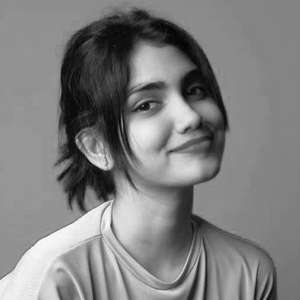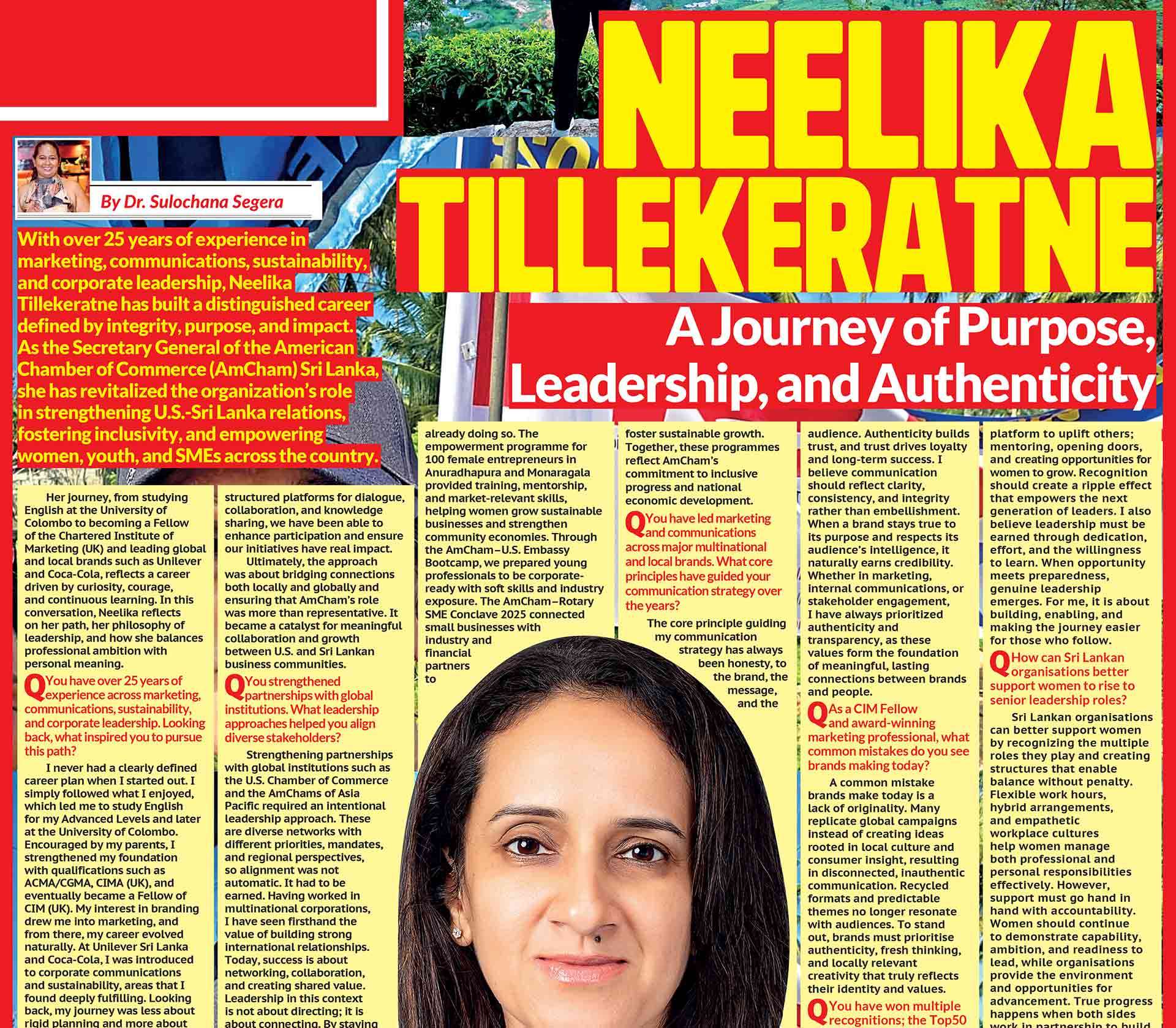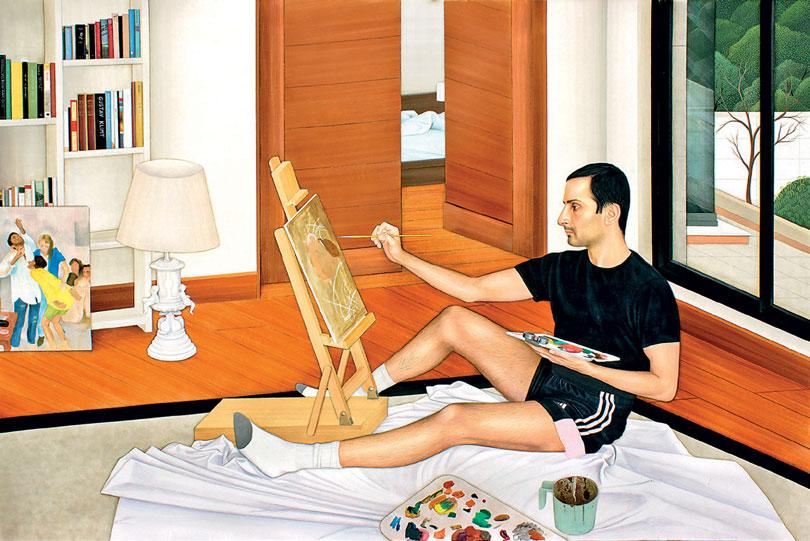
Salman Toor. 60x40 inches. Gouache on Wasli
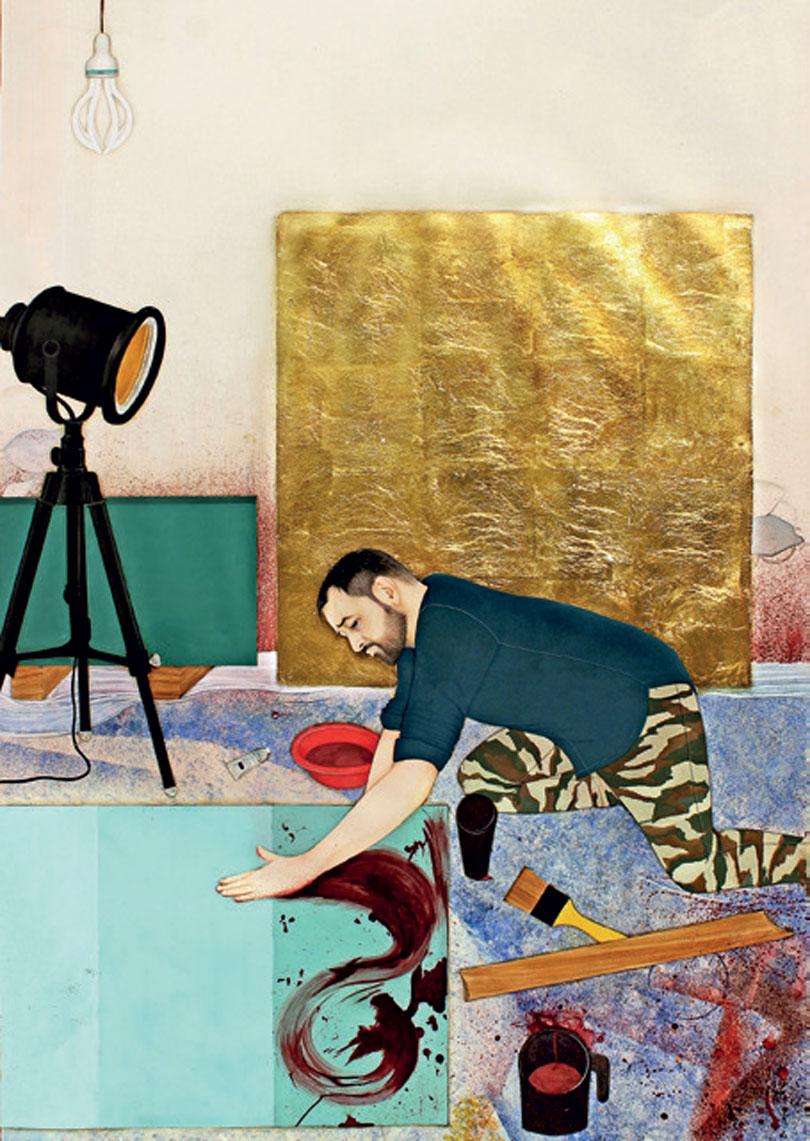
Imran Qureshi Studio. 40x60 inches. Gold leaf and Gouache on Wasli
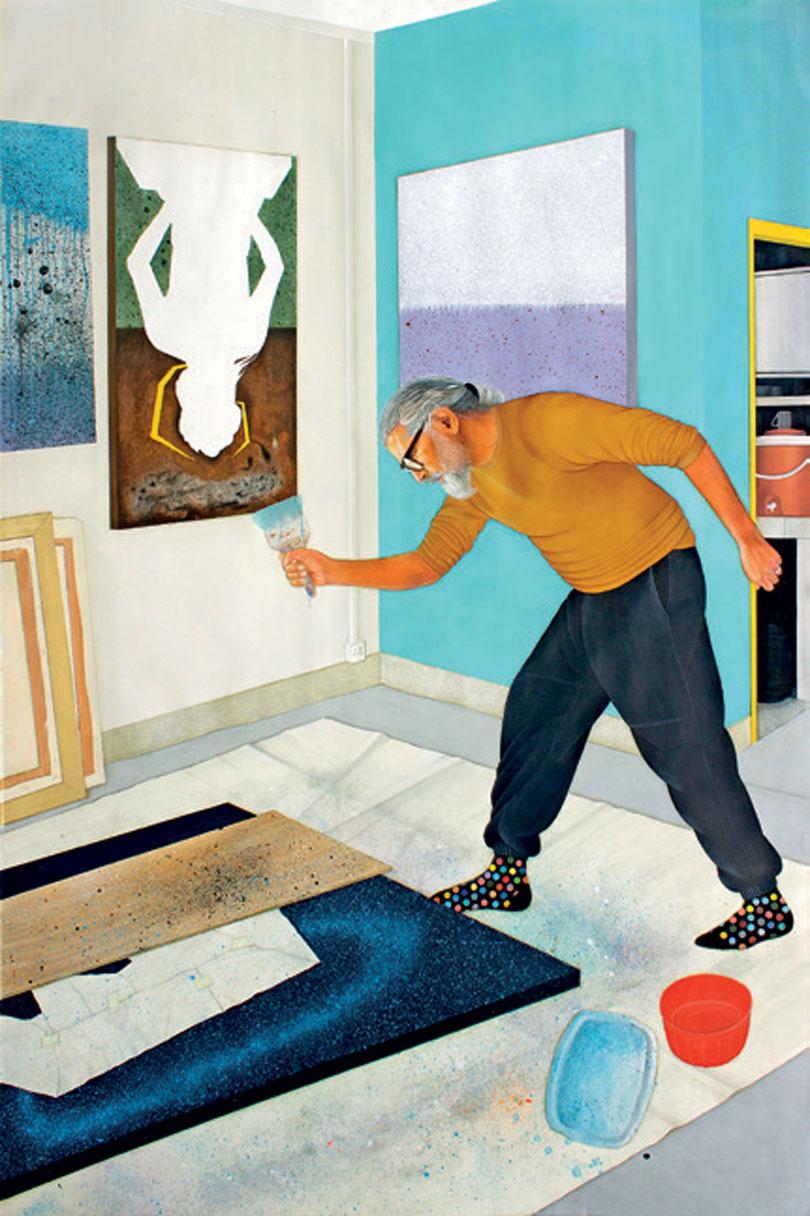
R M Naeem. 40x60 inches. Gouache on Wasli
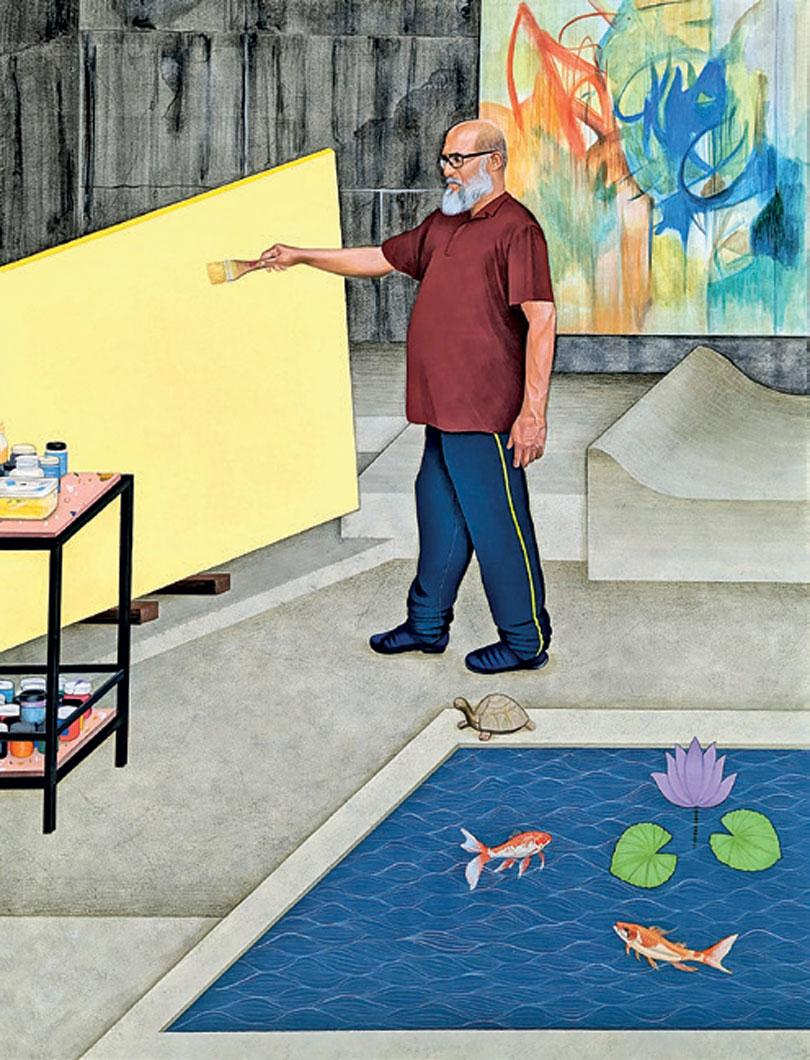
Jagath Ravindra. 21x27 inches. Gouache on Wasli
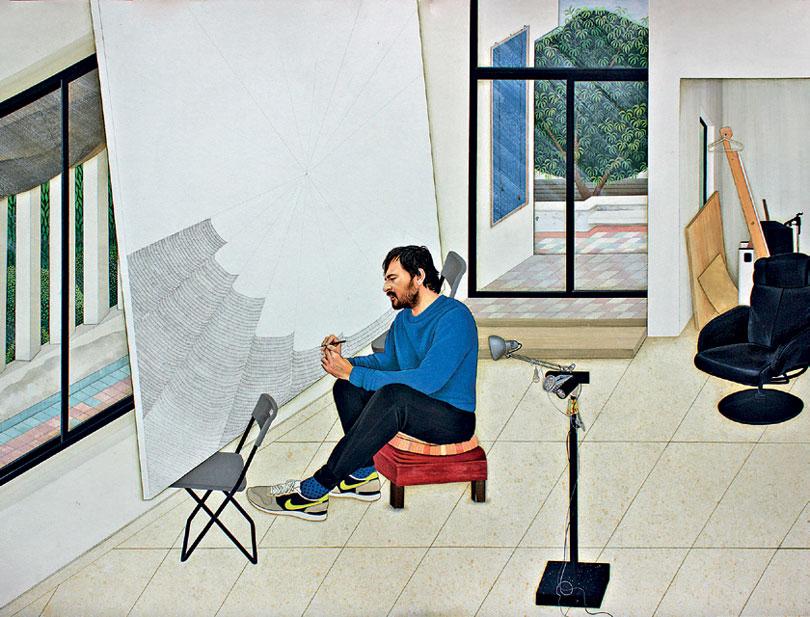
Wakas Khan Triptych. 40x60 inches. Gouache on Wasli
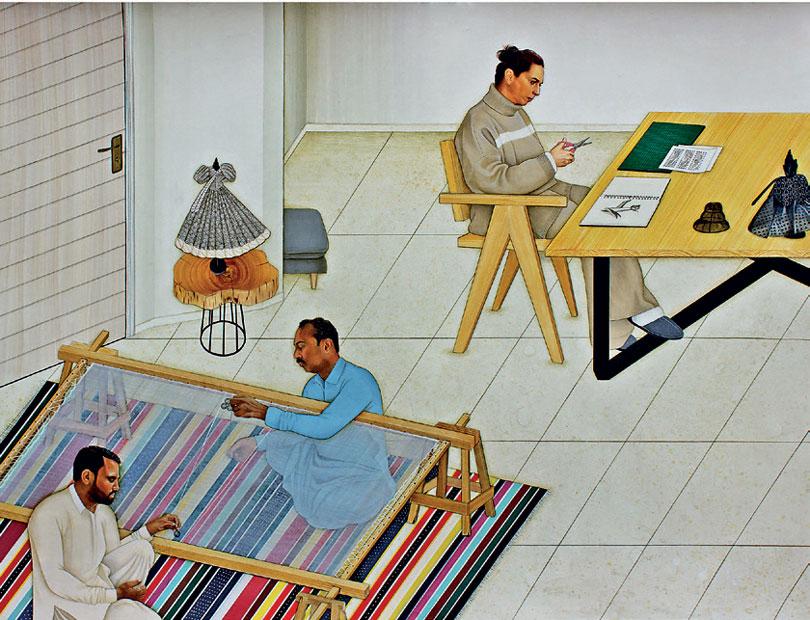

Naiza khan 21x27 inches Gouache on wasli
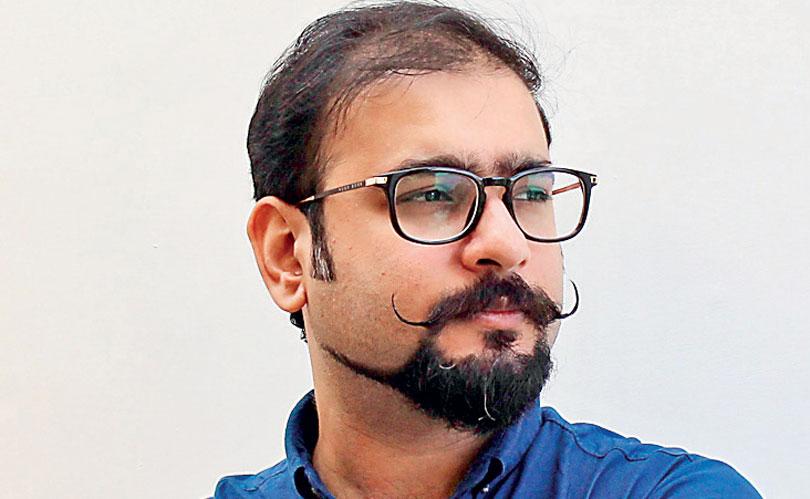
He began to depict modern-day creators: artists in their studios, everyday objects imbued with emotional texture, and moments of quiet labour
In the labyrinthine lanes of Lahore, a city where history breathes through its brick and bazaars, a young boy once sat quietly, sketching on the back of a used envelope. Around him, the world whirred with rickshaws, mosque calls, and market cries. But he remained still, caught in the quiet gravity of a pencil and the possibility it held. That boy was Ahmed Javed.
Born in 1992 into a middle-class family, Javed’s early life bore the familiar expectations of South Asian households. He was to become an engineer, a profession that bore the twin virtues of status and stability. But in his heart, Javed was always pulling away, tracing lines of a different blueprint, one not made of concrete, but of color and craft.
His academic path began in pre-engineering, chosen more to honor a father working abroad in Dubai than out of personal ambition. Then, fate intervened in the form of a forgotten sketch. One day, his sister discovered a drawing he had absentmindedly created. To her, it was not just a doodle, it was potential. With her encouragement, he joined a local art studio and met a teacher who would ignite the spark that had quietly been waiting. “You could be a good architect,” the teacher told him. “But you could be a great painter.”
It was a simple sentence, but one that redrew the contours of Javed’s future.
Still, the path was fraught. Determined to let destiny decide, Javed committed to attempting the entrance exam for the National College of Arts (NCA) just once. He passed on his first try, no shortcuts, no second chances. That singular decision led him into the heart of one of South Asia’s most respected art institutions.
There, in the corridors of NCA, Javed encountered miniature painting, a meticulous tradition rooted in Persian and Mughal heritage. Initially just another course, it soon transformed into his primary language of expression. The medium’s precision, intimacy, and narrative style resonated with his temperament. But Javed did not simply replicate classical forms, he evolved them.
He began to depict modern-day creators: artists in their studios, everyday objects imbued with emotional texture, and moments of quiet labour. In doing so, he redefined the miniature, allowing it to speak in contemporary tones.
One such work, Imran Qureshi Studio, a tribute to his mentor, earned Javed the 2019 Sovereign Asian Art Prize, making him the first Pakistani artist to do so. The recognition, and its accompanying $30,000 reward, elevated his standing globally. Yet, Javed remained grounded. “It felt like I had proven something, not just to the world, but to the younger me,” he says.
His art has since been featured in Harper’s Magazine, written about by critics such as Sage Mehta, and exhibited across global stages, from Lahore to Atlanta and Zürich. Notably, exhibitions like Affordable Luxury (2024), a group show, and his solo presentation Panorama (2023) invite viewers into spaces of contemplation, where art becomes both diary and documentation.
Still, perhaps his most poignant legacy lies not in the accolades, but in the vision: to preserve the essence of creative lives through visual storytelling. In portraying other artists in their studios, Javed offers not just homage, but history.
“I imagine someone a hundred years from now looking at my work and understanding how we lived, how we worked,” he says. “Much like we look at miniatures to learn about Mughal life.”
In that way, Ahmed Javed’s art is a memory in motion.
Insights from the Artist
Q Your recent works focus on depicting contemporary artists in their creative environments. If someone were to paint you in your studio, what elements would you want them to capture?
It would be such an honor if someone chose to paint me in my studio. I imagine it as a deeply personal moment, one where not just my physical space, but the spirit of my journey is captured. I’d want them to include everything I hold close: the sculptures and paintings from my college assignments that still surround me, each carrying a memory, a lesson. Most importantly, I would want them to include the portrait of my father that I painted in my second year. He passed away when I was in my third year, and that painting has become one of the most meaningful pieces in my studio, a quiet but powerful reminder of his presence, and the inspiration he continues to give me.
Q Winning the Sovereign Asian Art Prize is a significant milestone. How has this recognition impacted your career, and what does it mean to you personally as an artist?
Winning the Sovereign Asian Art Prize in 2019 was an incredible milestone, both for me personally and for Pakistan’s art community. Being the first Pakistani artist to receive this honor, and one of the highest-scoring artists in the prize’s history, was deeply humbling. The recognition opened so many doors; I was suddenly on the radar of museums and galleries around the world. It felt like a turning point in my career.
But then the pandemic struck, and like so many others, I faced a wave of cancellations. Almost every project that was in the pipeline came to a halt. The momentum I had built paused unexpectedly, and it was difficult to see those opportunities disappear. Still, I remain grateful, for the award, for the recognition, and for the hope it gave me. It reminded me that my work has a place in the global conversation, and that means everything.
Q Your work has been exhibited in esteemed venues such as Harper’s Magazine NY, the Change it to rietberg museum zurich, and international art fairs. Do you view these milestones as a culmination of your efforts, or do you see them as stepping-stones toward an even larger vision?
I’m incredibly grateful that my work began receiving international recognition while I was still a student. But I don’t see these milestones as a culmination, instead, I view them as meaningful steps on a much larger journey. Each opportunity has helped shape my path, and I carry those experiences forward with a strong sense of purpose and an even bigger vision for the future.
Q What’s next for Ahmed Javed? Any upcoming projects, exhibitions, or dreams you’re working toward?
For me, the journey isn’t about completing a piece, my work is an ongoing project. I’m documenting artists in their studios through illustration, capturing not just their likeness but the atmosphere, tools, and moments that define their creative lives.
Much like how we view miniature paintings today to understand the lifestyle of the Mughals, I imagine my work being viewed a hundred years from now as a visual record, a reference point for how contemporary artists lived and worked. That’s the dream I’m working toward: creating something that preserves the present for the future.

